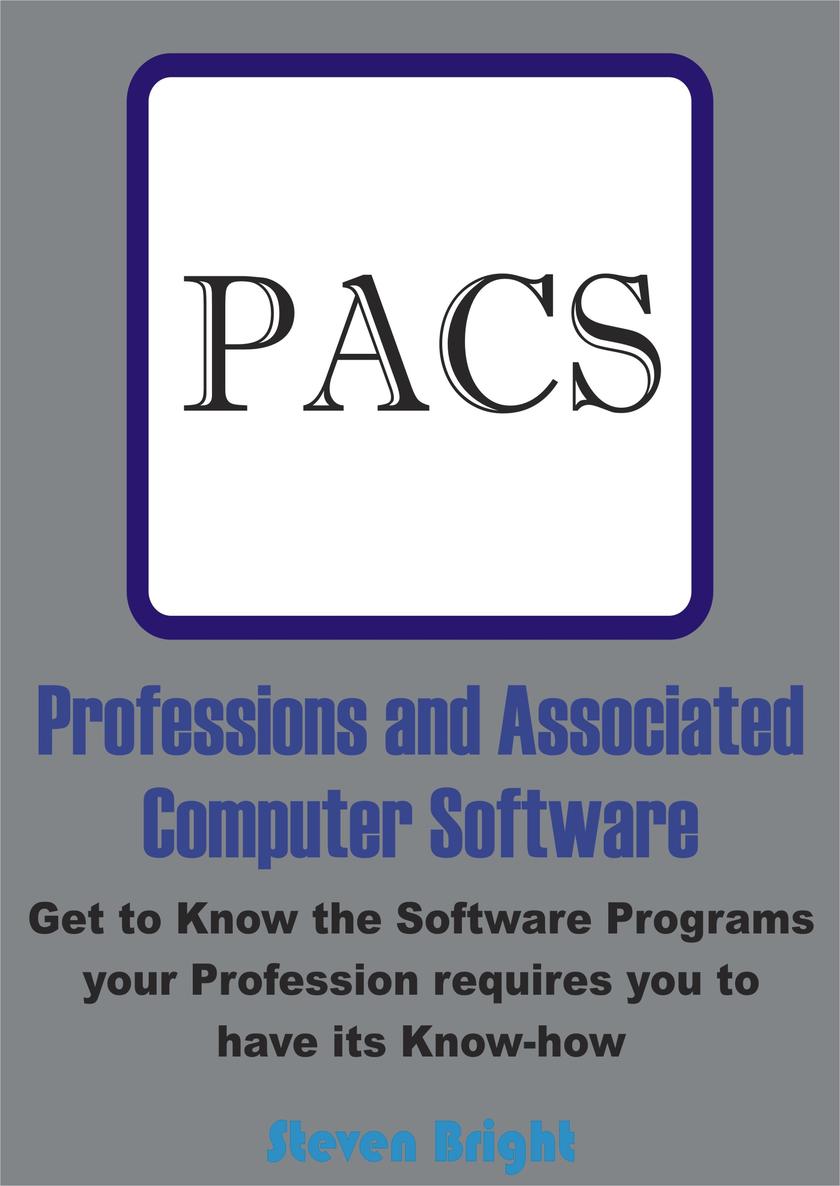
Professions and Associated Computer Software
¥13.90
Professions and Associated Computer Software
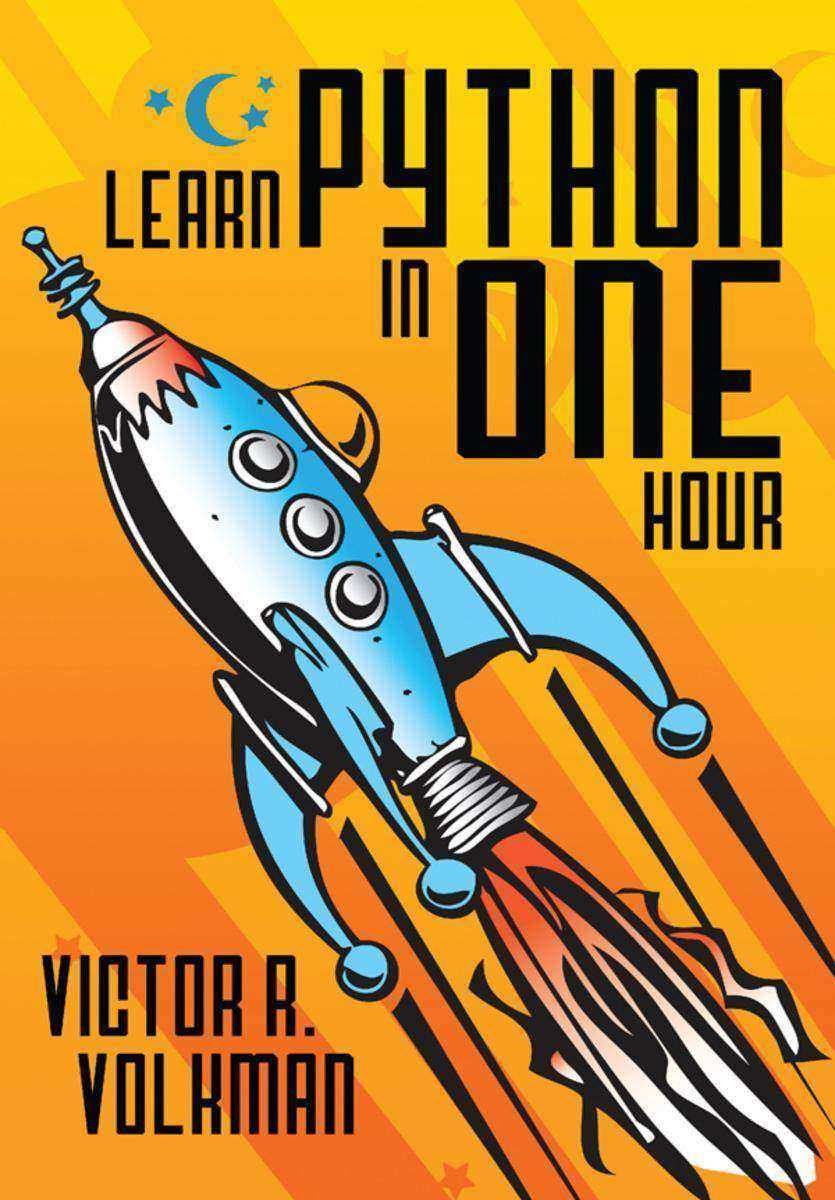
Learn Python in One Hour:Programming by Example
¥40.79
You're already a smart person, you don't need a 1000+ page book to get you started on the web's fastest growing programming platform. Instead, Learn Python in One Hour delivers on the promise of code literacy while saving your most precious commodity - time itself. Volkman's innovative programming-by-example approach means you focus on usage, not mindless detail. Based on the author's sold-out live seminars, you'll see Python's flexible coding technique in action as we refactor from script to procedural to object-oriented during actual problem solving. In a seven-lesson progression, you'll be exposed to this and more: Basic file input and output operations Exception handling with try/except Using functions to compute and return multiple values Basic elements of a class definition and how to call methods Lists, dictionaries, sets, and other collections Iteration through collections, files, sorted sets Converting lists to strings and vice-versa Six most common Python pitfalls Take the One Hour challenge and see if you too can pick up 90% of syntax and semantics in less time than you probably spend commuting each day.About the Author Victor R. Volkman graduated cum laude from Michigan Technological University with a BS in Computer Science in 1986. Since then, he has written for numerous publications, including The C Gazette, C++ Users Journal, Windows Developers Journal, and many others. He has taught college-level programming courses at Washtenaw Community College and has served on its Computer Information Science (CIS) Faculty Advisory Board for more than a decade. Volkman says Python helped him "rediscover the joy of programming again." www.volkman.org From Modern Software Press
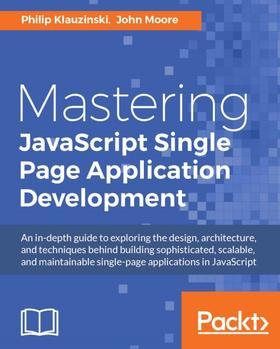
Mastering JavaScript Single Page Application Development
¥334.25
An in-depth guide to exploring the design, architecture, and techniques behind building sophisticated, scalable, and maintainable single-page applications in JavaScriptAbout This Book·Build large-scale, feature-complete SPAs by leveraging widely used tools and techniques.·Gain a solid understanding of architecture and SPA design to build applications using the library or framework of your choice.·Explore the various facets of SPA development to build web apps that are fast, scalable, and easy to test.Who This Book Is ForThis book is ideal for JavaScript developers who want to build complex single-page applications in JavaScript. Some basic understanding of SPA concepts will be helpful but not essential.What You Will Learn·Organize your development environment using the command line with NPM, Bower, and Grunt.·Choose an accurate design pattern for your app·Understand modular JavaScript programming and Node.js·Interact with a REST API using JavaScript and AJAX with practical examples·Build a single page application using the MEAN stack·Connect your app across popular social media platforms such as Facebook, Twitter, and LinkedIn·Test your app, both on the server side and in views·Prepare your app for the real world and deploy it to HerokuIn DetailSingle-page web applications—or SPAs, as they are commonly referred to—are quickly becoming the de facto standard for web app development. The fact that a major part of the app runs inside a single web page makes it very interesting and appealing. Also, the accelerated growth of browser capabilities is pushing us closer to the day when all apps will run entirely in the browser.This book will take your JavaScript development skills to the next level by teaching you to create a single-page application within a full-stack JavaScript environment. Using only JavaScript, you can go from being a front-end developer to a full-stack application developer with relative ease.You will learn to cross the boundary from front-end development to server-side development through the use of JavaScript on both ends. Use your existing knowledge of JavaScript by learning to manage a JSON document data store with MongoDB, writing a JavaScript powered REST API with Node.js and Express, and designing a front-end powered by AngularJS.This book will teach you to leverage the MEAN stack to do everything from document database design, routing REST web API requests, data-binding within views, and adding authentication and security to building a full-fledged, complex, single-page web application.In addition to building a full-stack JavaScript app, you will learn to test it with JavaScript-powered testing tools such as Mocha, Karma, and Jasmine. Finally, you will learn about deployment and scaling so that you can launch your own apps into the real world.Style and approachFollowing a structured approach, this book helps readers gain expertise in SPA development. Its thorough coverage of SPA architecture and design, along with practical use cases, provides readers with a clear path to building applications with the library of their choice. For readers who are afraid to take the plunge straightaway, the book also offers step-by-step guidance on developing a complex web app.
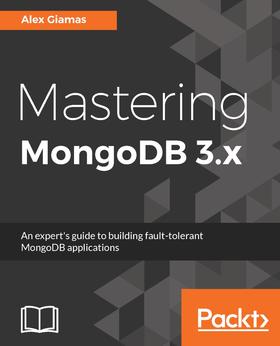
Mastering MongoDB 3.x:An expert's guide to building fault-tolerant MongoDB appli
¥259.95
An expert's guide to build fault tolerant MongoDB applicationAbout This Book·Master the advanced modeling, querying, and administration techniques in MongoDB and become a MongoDB expert·Covers the latest updates and Big Data features frequently used by professional MongoDB developers and administrators·If your goal is to become a certified MongoDB professional, this book is your perfect companionWho This Book Is ForMastering MongoDB is a book for database developers, architects, and administrators who want to learn how to use MongoDB more effectively and productively.If you have experience in, and are interested in working with, NoSQL databases to build apps and websites, then this book is for you.What You Will Learn·Get hands-on with advanced querying techniques such as indexing, expressions, arrays, and more.·Configure, monitor, and maintain highly scalable MongoDB environment like an expert.·Master replication and data sharding to optimize read/write performance.·Design secure and robust applications based on MongoDB.·Administer MongoDB-based applications on-premise or in the cloud·Scale MongoDB to achieve your design goals·Integrate MongoDB with big data sources to process huge amounts of dataIn DetailMongoDB has grown to become the de facto NoSQL database with millions of users—from small startups to Fortune 500 companies. Addressing the limitations of SQL schema-based databases, MongoDB pioneered a shift of focus for DevOps and offered sharding and replication maintainable by DevOps teams. The book is based on MongoDB 3.x and covers topics ranging from database querying using the shell, built in drivers, and popular ODM mappers to more advanced topics such as sharding, high availability, and integration with big data sources.You will get an overview of MongoDB and how to play to its strengths, with relevant use cases. After that, you will learn how to query MongoDB effectively and make use of indexes as much as possible. The next part deals with the administration of MongoDB installations on-premise or in the cloud. We deal with database internals in the next section, explaining storage systems and how they can affect performance. The last section of this book deals with replication and MongoDB scaling, along with integration with heterogeneous data sources. By the end this book, you will be equipped with all the required industry skills and knowledge to become a certified MongoDB developer and administrator.Style and approachThis book takes a practical, step-by-step approach to explain the concepts of MongoDB. Practical use-cases involving real-world examples are used throughout the book to clearly explain theoretical concepts.
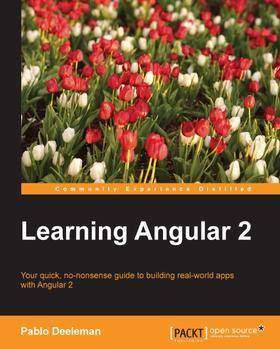
Learning Angular 2
¥297.10
Your quick, no-nonsense guide to building real-world apps with Angular 2About This Book·The first and best overview of Angular 2 on the market—this guide gathers together everything there is to know about Angular 2 and groups it into intuitive sections.·This book is your detailed map of every feature and its use cases.·The author has done all the hard work of fitting everything Angular 2 means for developers together for you, making this book the quickest way to learn Angular 2 from scratch.Who This Book Is ForThis book is targeted at web developers who want to build the next generation of state-of-the-art mobile and desktop web applications with Angular 2. This book does not require you to have prior exposure to either Angular 1.x or 2, although comprehensive knowledge of JavaScript is assumed. It's great for newcomers to Angular who learn best through clear explanations and definitions of concepts.What You Will Learn·Set up your working environment in order to have all the tools you need to start building Angular 2 components with minimum effort·Get up to speed with TypeScript, a powerful typed superset of JavaScript that compiles to plain JavaScript·Take full control of how your data is rendered and updated upon data changes·Build powerful web applications based on structured component hierarchies that emit and listen to events and data changes throughout the elements tree·Explore how to consume external APIs and data services and allow data editing by harnessing the power of web forms made with Angular 2·Deliver seamless web navigation experiences with application routing and state handling common features with ease·Discover how to bulletproof your applications by introducing smart unit testing techniques and debugging toolsIn DetailAngular 2 was conceived as a complete rewrite in order to fulfill the expectations of modern developers who demand blazing fast performance and responsiveness from their web applications.This book will help you learn the basics of how to design and build Angular 2 components right from the beginning, providing full coverage of the TypeScript syntax required to follow the examples included. From that point on, we will build upon our first components, interconnect them, and give shape to larger web applications. We will then move to implementing routing in Angular 2, analyzing how to handle application states, and navigating from one component to another in depth. After this, the book features full coverage of web forms and user input validation, later leveraging all of this information to go through the basics of implementing user authentication in Angular 2 and providing a bird's eye view of the different strategies at hand to secure pages and areas of your website. Animating components and DOM elements with Angular 2 is also covered in this book. The final part of this book provides broad insights into how to unit test components and other modules such as services, directives, routes or pipes.Style and approachThis book covers everything there is to know about getting well-acquainted with Angular without bogging you down. Everything is neatly laid out under clear headings for quick consultation, offering you the information required to understand a concept immediately, with short relevant examples of each feature.
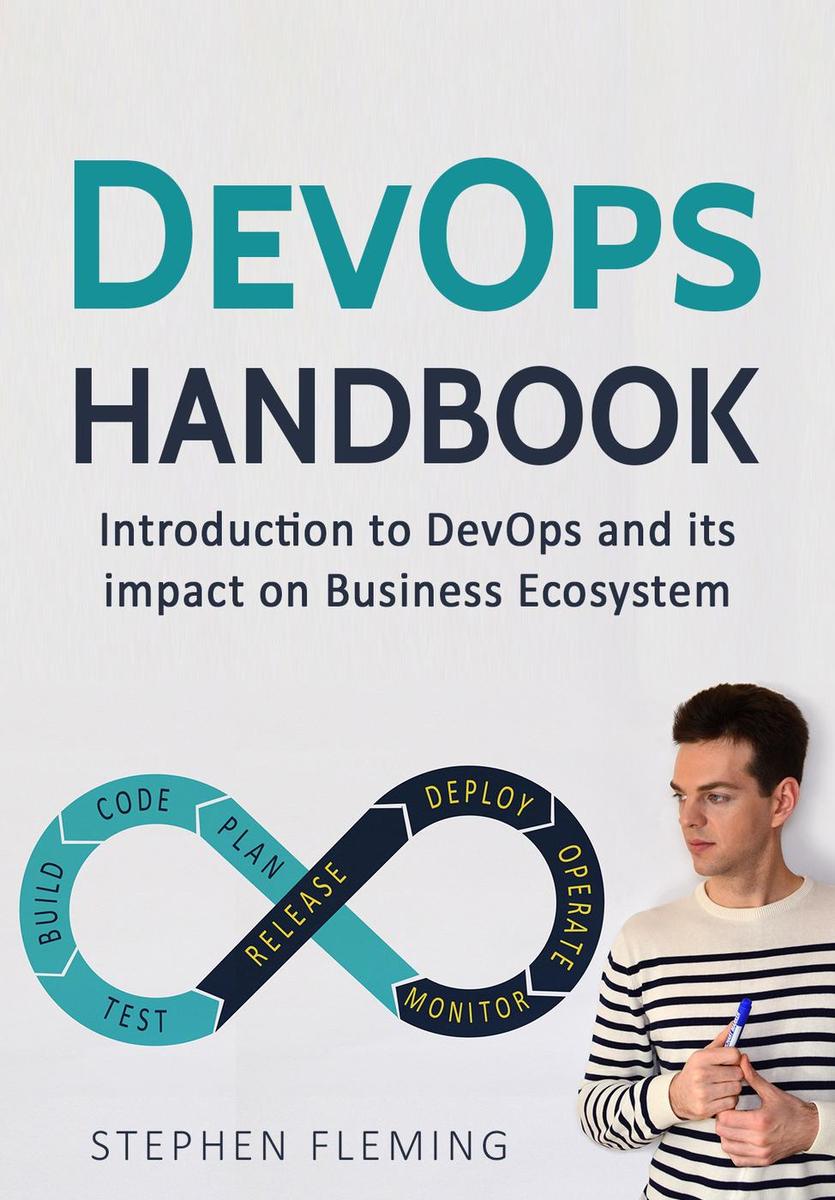
DevOps:Introduction to DevOps and its impact on Business Ecosystem
¥32.62
“It is not the strongest of the species that survive, nor the most intelligent, but the one most responsive to change.”-?Charles Darwin As the industry is moving towards maximum digitization there is a consensus that DevOps practices help you deliver software faster, more reliable, and with fewer errors. DevOps is set of practices and cultural values that have been proven to help organizations of all sizes improve their software release cycles, software quality, security, and ability to get rapid feedback on product development. This book is aimed at Consultant, Project Manager and people from techno-commercial profiles who would be explaining the benefits of DevOps to the client, internal leadership or project teams. As the crux of DevOps methodology lies in the cultural transformation of the organization, people who are stakeholders in shaping this change must understand the overall alignment of business goals with this methodology. You would get to explore: ·What is DevOps·Relationship between Agile, Scrum, Kanban and DevOps·DevOps Adoption:? Organizational cultural Change·DevOps Ecosystem·Emerging Trends·DevOps success stories In the Bonus Booklet you will find out: ·DevOps Job Market overview·Insights into DevOps job application·People to follow on twitter “Grab your copy today along with Bonus DevOps Booklet”
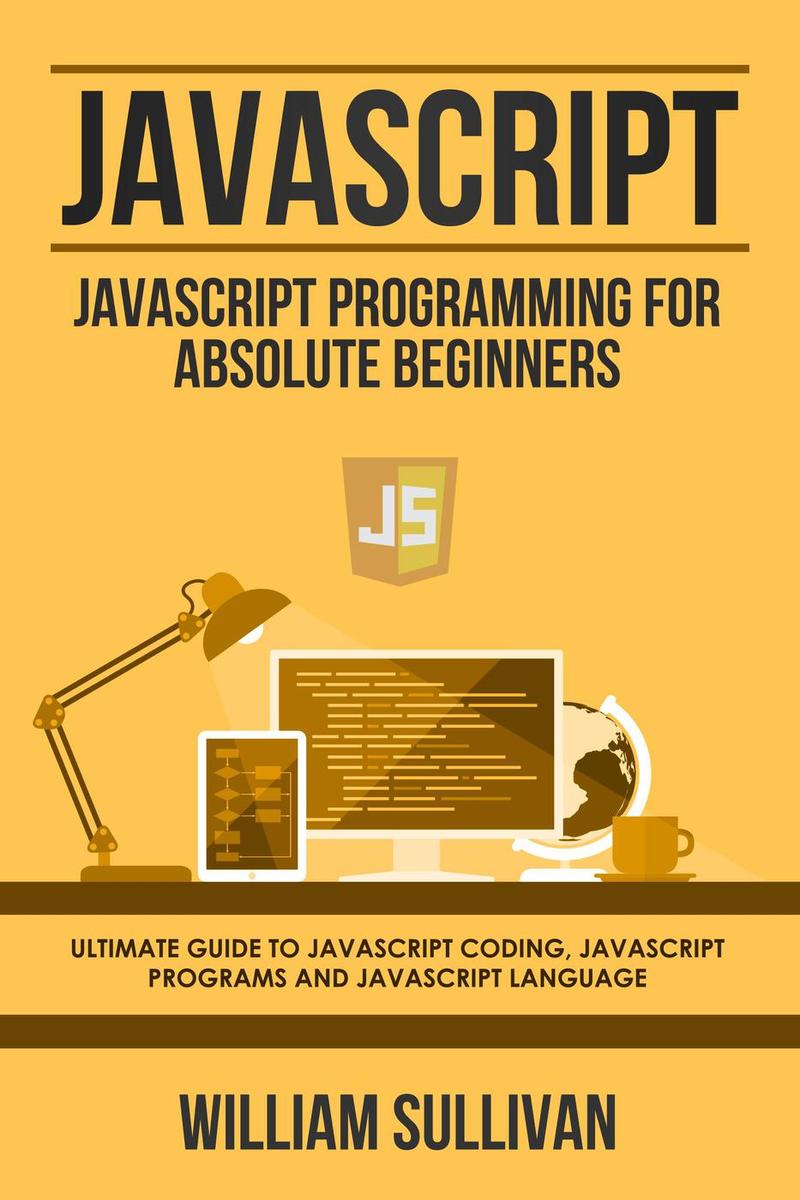
Javascript: Javascript Programming For Absolute Beginners
¥32.62
☆★☆ Javascript: Javascript Programming For Absolute Beginners☆★☆ The best starter guide for javascript!The fundamentals of javascript are often missed, however, this book's primary focus and emphasis is learning the essentials and to build from the ground up.? What You'lll Learn The history of JavaScript and its uses Setting Up Your Environment The Vital Basics of HTML and CSS Statements, Comments & Variables How to properly use jQuery String Operators JavaScript Array Methods Loops and Iteration How To Use Functions And much, much more! ? Within this book you will learn various mechanisms of javascript programming: variables, conditional statements, and why learning these core principles lead to success.Once you gain knowledge of the fundamental building blocks of javascript you will gain confidence to tackle more complex topics down the road.Programming books can easily retail for 100s of dollars, why not start with an expert you can trust and for an affordable price?The immense value of this book cannot be understated, and this is a once in a life time opportunity for you to take advantage of and invest in yourself by empowering yourself with the right tools and knowledge for success.What are you waiting for?Includes: 21 practice questions! Note* For best visual experience of diagrams it is highly recommend you purchases the paperback version for best image quality.☆★☆ Grab your copy now!☆★☆
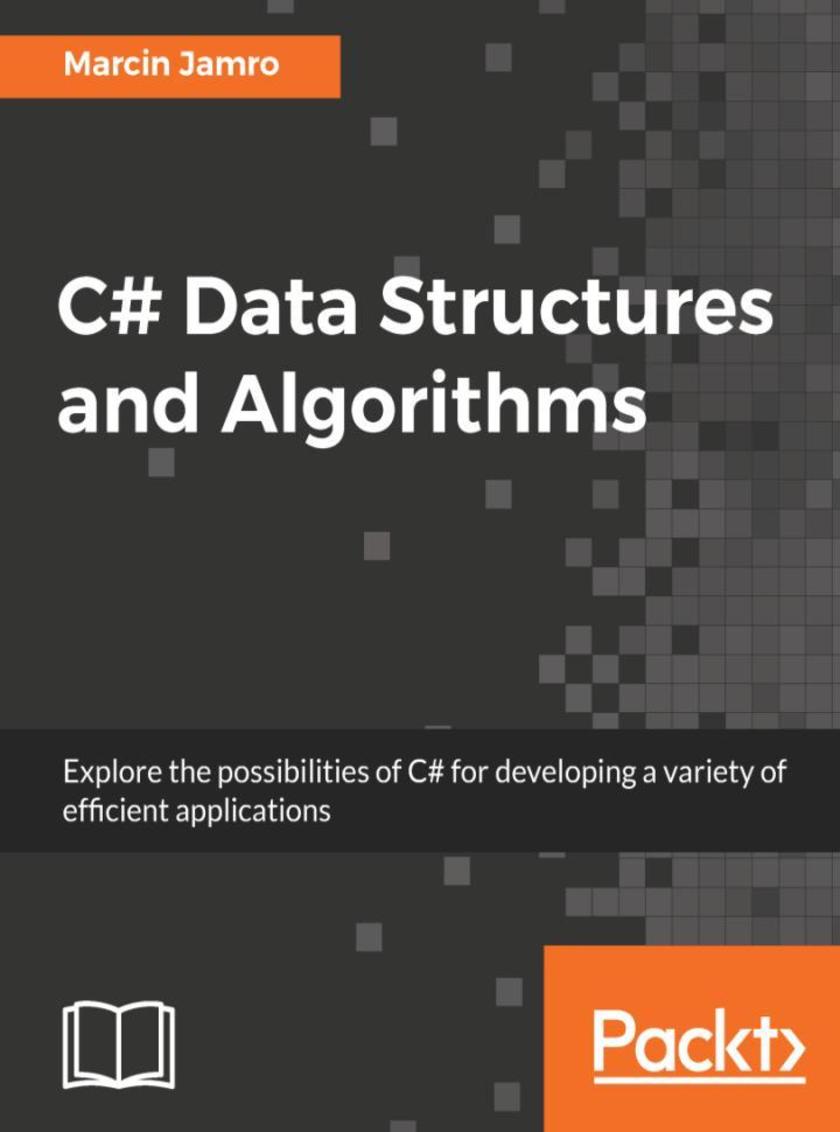
C# Data Structures and Algorithms
¥90.46
A complete guide on using data structures and algorithms to write sophisticated C# code About This Book ? Master array, set and map with trees and graphs, among other fundamental data structures ? Delve into effective design and implementation techniques to meet your software requirements ? Explore illustrations to present data structures and algorithms, as well as their analysis in a clear, visual manner. Who This Book Is For This book is for developers who would like to learn the Data Structures and Algorithms in C#. Basic C# programming knowledge would be an added advantage. What You Will Learn ? How to use arrays and lists to get better results in complex scenarios ? Implement algorithms like the Tower of Hanoi on stacks of C# objects ? Build enhanced applications by using hashtables, dictionaries and sets ? Make a positive impact on efficiency of applications with tree traversal ? Effectively find the shortest path in the graph In Detail Data structures allow organizing data efficiently. They are critical to various problems and their suitable implementation can provide a complete solution that acts like reusable code. In this book, you will learn how to use various data structures while developing in the C# language as well as how to implement some of the most common algorithms used with such data structures. At the beginning, you will get to know arrays, lists, dictionaries, and sets together with real-world examples of your application. Then, you will learn how to create and use stacks and queues. In the following part of the book, the more complex data structures will be introduced, namely trees and graphs, together with some algorithms for searching the shortest path in a graph. We will also discuss how to organize the code in a manageable, consistent, and extendable way. By the end of the book,you will learn how to build components that are easy to understand, debug, and use in different applications. Style and approach Readers will be taken through all the indispensable data structures and algorithms so they can begin their coding journey in C#. At each step, the book will show how to implement these via examples while also discussing the attributes of each algorithm so readers are capable to make an informed choice.
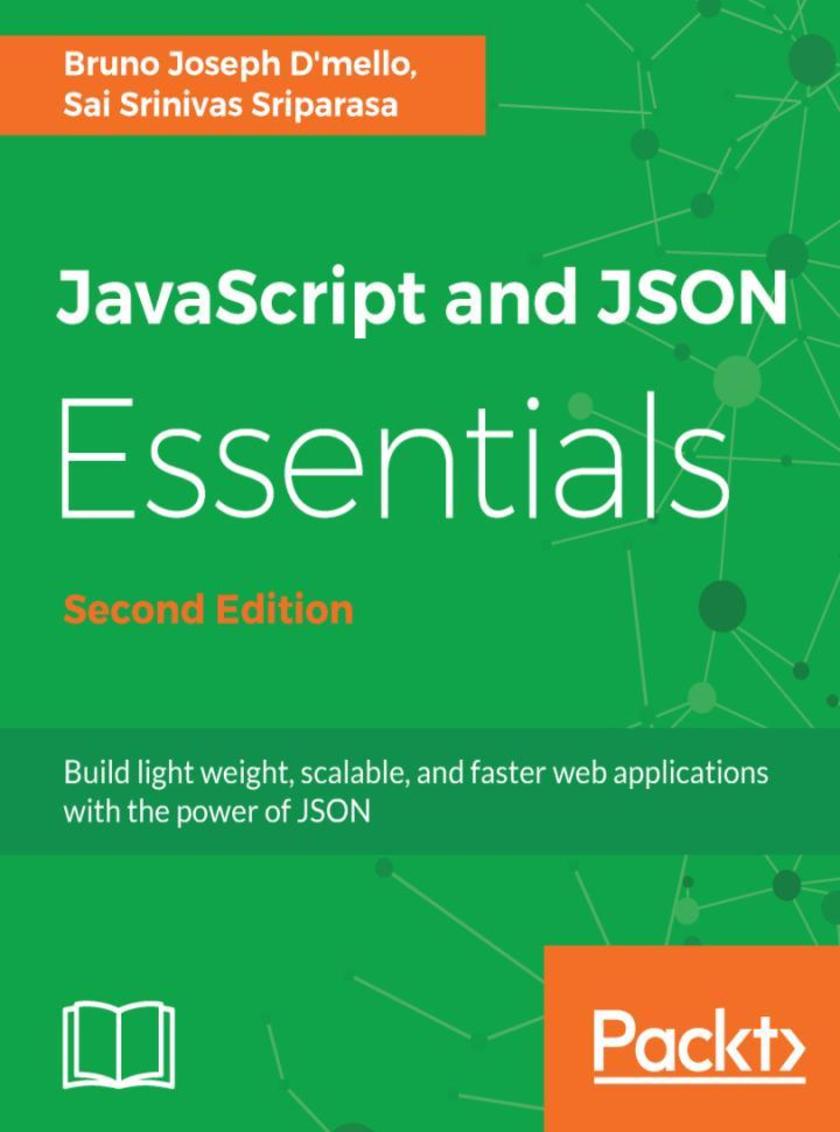
JavaScript and JSON Essentials
¥54.49
Use JSON for building web applications with technologies like HTML, JavaScript, Angular, Node.js, Hapi.js, Kafka, socket.io, MongoDB, Gulp.js, and handlebar.js, and others formats like GEOJSON, JSON-LD, MessagePack, and BSON. About This Book ? Use JSON with trending technologies like Angular, Hapi.js, MongoDB, Kafka, and Socket.io ? Debug, validate, and format JSON using developer toolkits, JSONLint, and JSON Editor Online ? Explore other JSON formats like GeoJSON, JSON-LD, BSON, and MessagePack Who This Book Is For If you’re a web developer with a basic understanding of JavaScript and want to write JSON data, integrate it with RESTful APIs to create faster and scalable applications, this book is for you. What You Will Learn ? Use JSON to store metadata for dependency managers, package managers, configuration managers, and metadata stores ? Handle asynchronous behavior in applications using callbacks, promises, generators, and async-await functions ? Use JSON for Angular 5, Node.js, Gulp.js, and Hapi.js ? Implement JSON as BSON in MongoDB ? Make use of JSON in developing automation scripts ? Implement JSON for realtime using socket.io and distributed systems using Kafka In Detail JSON is an established and standard format used to exchange data. This book shows how JSON plays different roles in full web development through examples. By the end of this book, you'll have a new perspective on providing solutions for your applications and handling their complexities. After establishing a strong basic foundation with JSON, you'll learn to build frontend apps by creating a carousel. Next, you'll learn to implement JSON with Angular 5, Node.js, template embedding, and composer.json in PHP. This book will also help you implement Hapi.js (known for its JSON-configurable architecture) for server-side scripting. You'll learn to implement JSON for real-time apps using Kafka, as well as how to implement JSON for a task runner, and for MongoDB BSON storage. The book ends with some case studies on JSON formats to help you sharpen your creativity by exploring futuristic JSON implementations. By the end of the book, you'll be up and running with all the essential features of JSON and JavaScript and able to build fast, scalable, and efficient web applications. Style and approach JavaScript and JSON Essentials, Second Edition, takes you on a fast-paced, hands-on journey through building lightweight, scalable and faster web applications with JSON.
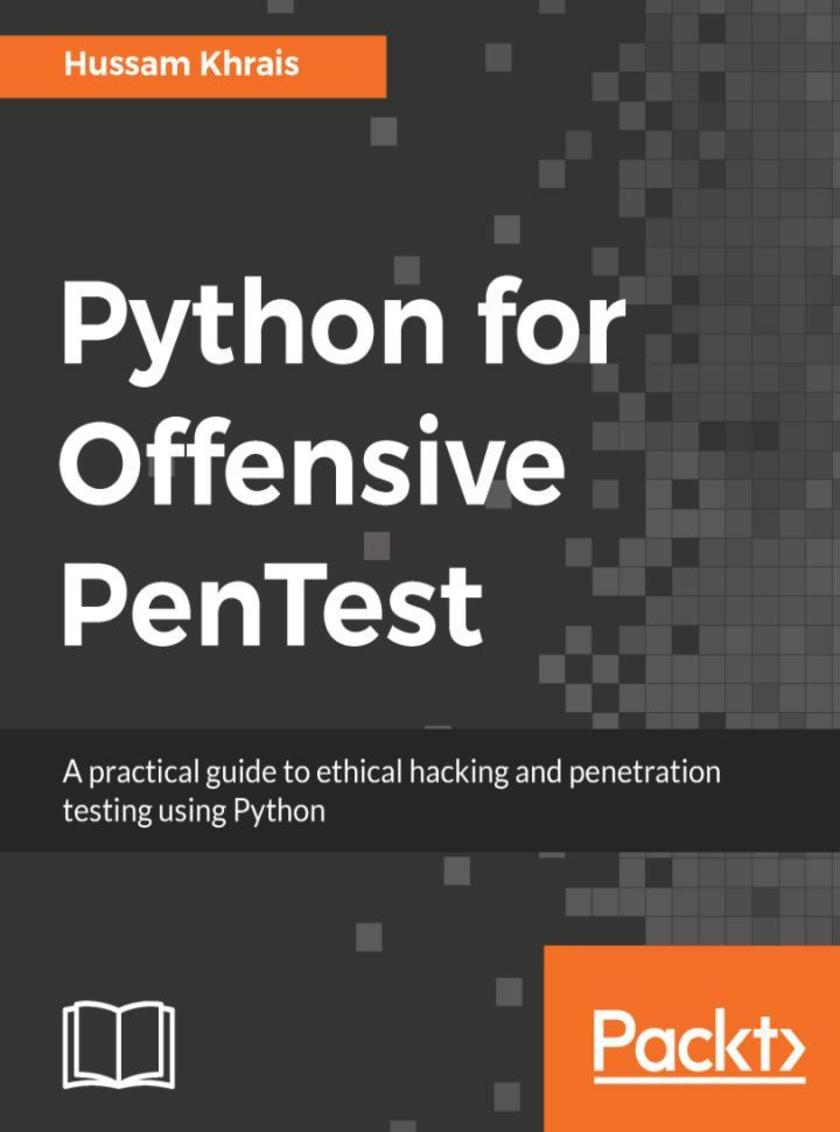
Python for Offensive PenTest
¥54.49
Your one-stop guide to using Python, creating your own hacking tools, and making the most out of resources available for this programming language About This Book ? Comprehensive information on building a web application penetration testing framework using Python ? Master web application penetration testing using the multi-paradigm programming language Python ? Detect vulnerabilities in a system or application by writing your own Python scripts Who This Book Is For This book is for ethical hackers; penetration testers; students preparing for OSCP, OSCE, GPEN, GXPN, and CEH; information security professionals; cybersecurity consultants; system and network security administrators; and programmers who are keen on learning all about penetration testing. What You Will Learn ? Code your own reverse shell (TCP and HTTP) ? Create your own anonymous shell by interacting with Twitter, Google Forms, and SourceForge ? Replicate Metasploit features and build an advanced shell ? Hack passwords using multiple techniques (API hooking, keyloggers, and clipboard hijacking) ? Exfiltrate data from your target ? Add encryption (AES, RSA, and XOR) to your shell to learn how cryptography is being abused by malware ? Discover privilege escalation on Windows with practical examples ? Countermeasures against most attacks In Detail Python is an easy-to-learn and cross-platform programming language that has unlimited third-party libraries. Plenty of open source hacking tools are written in Python, which can be easily integrated within your script. This book is packed with step-by-step instructions and working examples to make you a skilled penetration tester. It is divided into clear bite-sized chunks, so you can learn at your own pace and focus on the areas of most interest to you. This book will teach you how to code a reverse shell and build an anonymous shell. You will also learn how to hack passwords and perform a privilege escalation on Windows with practical examples. You will set up your own virtual hacking environment in VirtualBox, which will help you run multiple operating systems for your testing environment. By the end of this book, you will have learned how to code your own scripts and mastered ethical hacking from scratch. Style and approach This book follows a practical approach that takes a gradual learning curve, building up your knowledge about ethical hacking, right from scratch. The focus is less on theory and more on practical examples through a step-by-step approach.
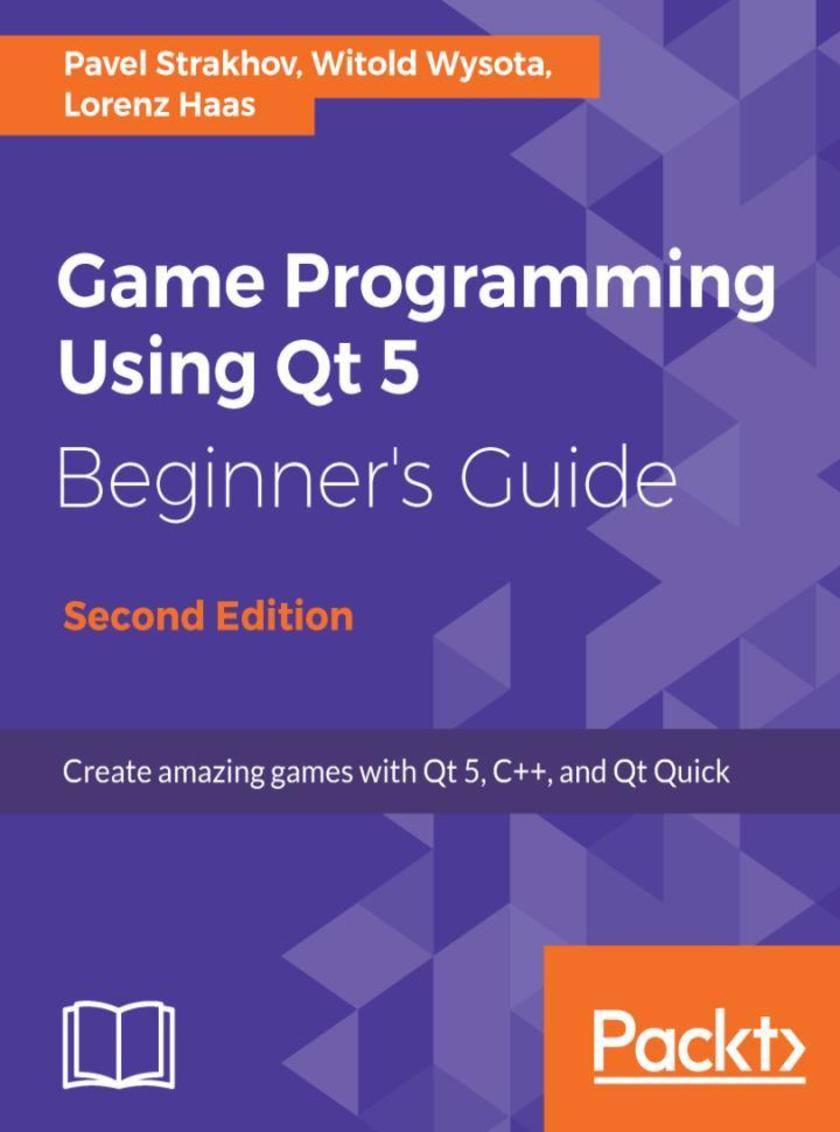
Game Programming using Qt 5 Beginner's Guide
¥90.46
A complete guide to designing and building fun games with Qt and Qt Quick using associated toolsets About This Book ? A step by step guide to learn Qt by building simple yet entertaining games ? Get acquainted with a small yet powerful addition—Qt Gamepad Module, that enables Qt applications to support the use of gamepad hardware ? Understand technologies such as QML, OpenGL, and Qt Creator to design intuitive games Who This Book Is For If you want to create great graphical user interfaces and astonishing games with Qt, this book is ideal for you. No previous knowledge of Qt is required; however knowledge of C++ is mandatory. What You Will Learn ? Install the latest version of Qt on your system ? Understand the basic concepts of every Qt game and application ? Develop 2D object-oriented graphics using Qt Graphics View ? Build multiplayer games or add a chat function to your games with Qt Network module ? Script your game with Qt QML ? Explore the Qt Gamepad module in order to integrate gamepad support in C++ and QML applications ? Program resolution-independent and fluid UIs using QML and Qt Quick ? Control your game flow in line with mobile device sensors ? Test and debug your game easily with Qt Creator and Qt Test In Detail Qt is the leading cross-platform toolkit for all significant desktop, mobile, and embedded platforms and is becoming popular by the day, especially on mobile and embedded devices. It's a powerful tool that perfectly fits the needs of game developers. This book will help you learn the basics of Qt and will equip you with the necessary toolsets to build apps and games. The book begins by how to create an application and prepare a working environment for both desktop and mobile platforms. You will learn how to use built-in Qt widgets and Form Editor to create a GUI application and then learn the basics of creating graphical interfaces and Qt's core concepts. Further, you'll learn to enrich your games by implementing network connectivity and employing scripting. You will learn about Qt's capabilities for handling strings and files, data storage, and serialization. Moving on, you will learn about the new Qt Gamepad module and how to add it in your game and then delve into OpenGL and Vulcan, and how it can be used in Qt applications to implement hardware-accelerated 2D and 3D graphics. You will then explore various facets of Qt Quick: how it can be used in games to add game logic, add game physics, and build astonishing UIs for your games. By the end of this book, you will have developed the skillset to develop interesting games with Qt. Style and approach Learn Qt with the help of numerous sample games, introduced step-by-step in each chapter
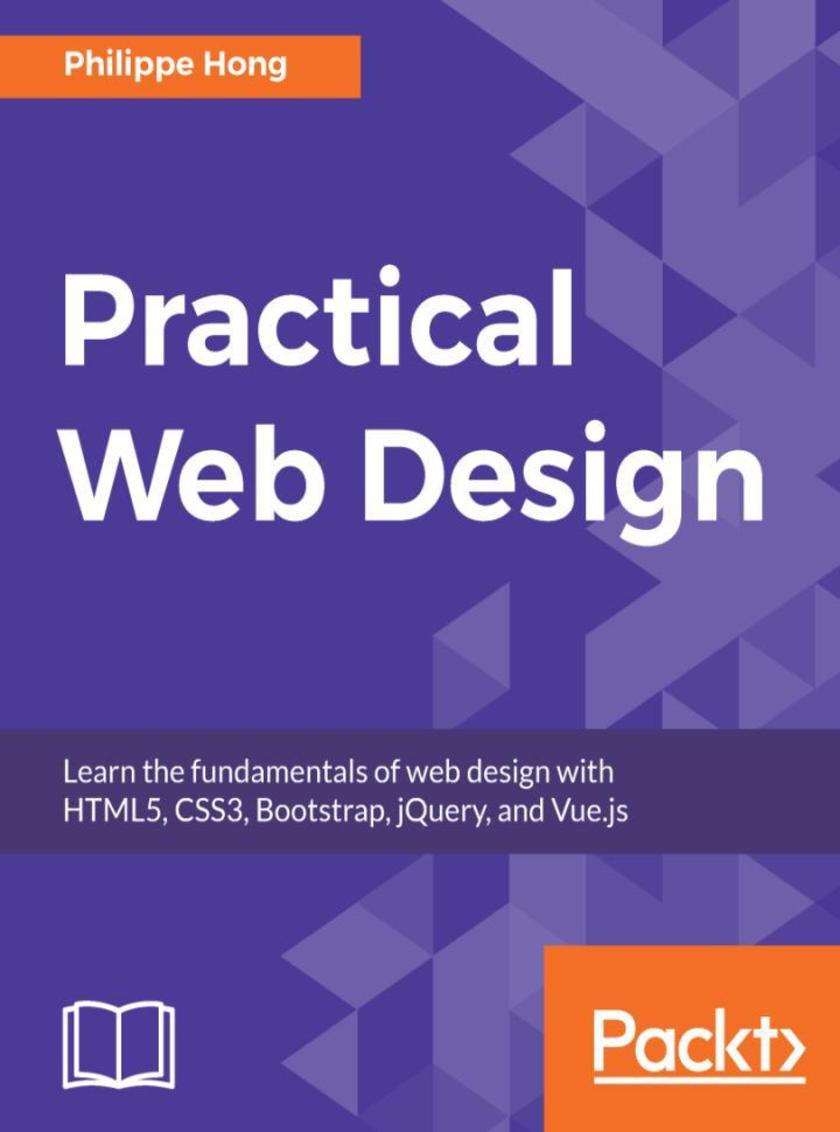
Practical Web Design
¥73.02
A step by step guide for beginners to create interactive and dynamic websites from scratch. About This Book ? A fun-filled book with incrementing projects that would help you learn and adapt the fundamentals of web development ? Bring your web design to life with the help of HTML, CSS, JQuery, and learn to kick-start your future projects with Bootstrap ? Explore popular web development techniques such as responsive, adaptive, and material design and initiate yourself with Vue.js Who This Book Is For This book is for anyone who wants to learn about web development regardless of previous experience. It's perfect for complete beginners with zero experience; it's also great for anyone who does have some experience in a few technologies (such as HTML and CSS) but not all of them. What You Will Learn ? Understand the importance of web design and the basic design components ? Learn HTML5 and CSS3 ? Difference between adaptive and responsive web design ? Learn how to create your first website ? Add interaction and dynamic content to your website with JavaScript and JQuery ? Implement Bootstrap Framework in your project ? Get familiar with server-side rendering In Detail Web design is the process of creating websites. It encompasses several different aspects, including webpage layout, content production, and graphic design. This book offers you everything you need to know to build your websites. The book starts off by explaining the importance of web design and the basic design components used in website development. It'll show you insider tips to work quickly and efficiently with web technologies such as HTML5, CSS3, and JavaScript, concluding with a project on creating a static site with good layout. Once you've got that locked down, we'll get our hands dirty by diving straight into learning JavaScript and JQuery, ending with a project on creating dynamic content for your website. After getting our basic website up and running with the dynamic functionalities you'll move on to building your own responsive websites using more advanced techniques such as Bootstrap. Later you will learn smart ways to add dynamic content, and modern UI techniques such as Adaptive UI and Material Design. This will help you understand important concepts such as server-side rendering and UI components. Finally we take a look at various developer tools to ease your web development process. Style and approach This is a fun-filled book with conversational and engaging content ; with each incrementing project, you'll would easily learn and adapt the fundamentals of web development. Each project showcases a different use case and incrementally teaches the web development basics.
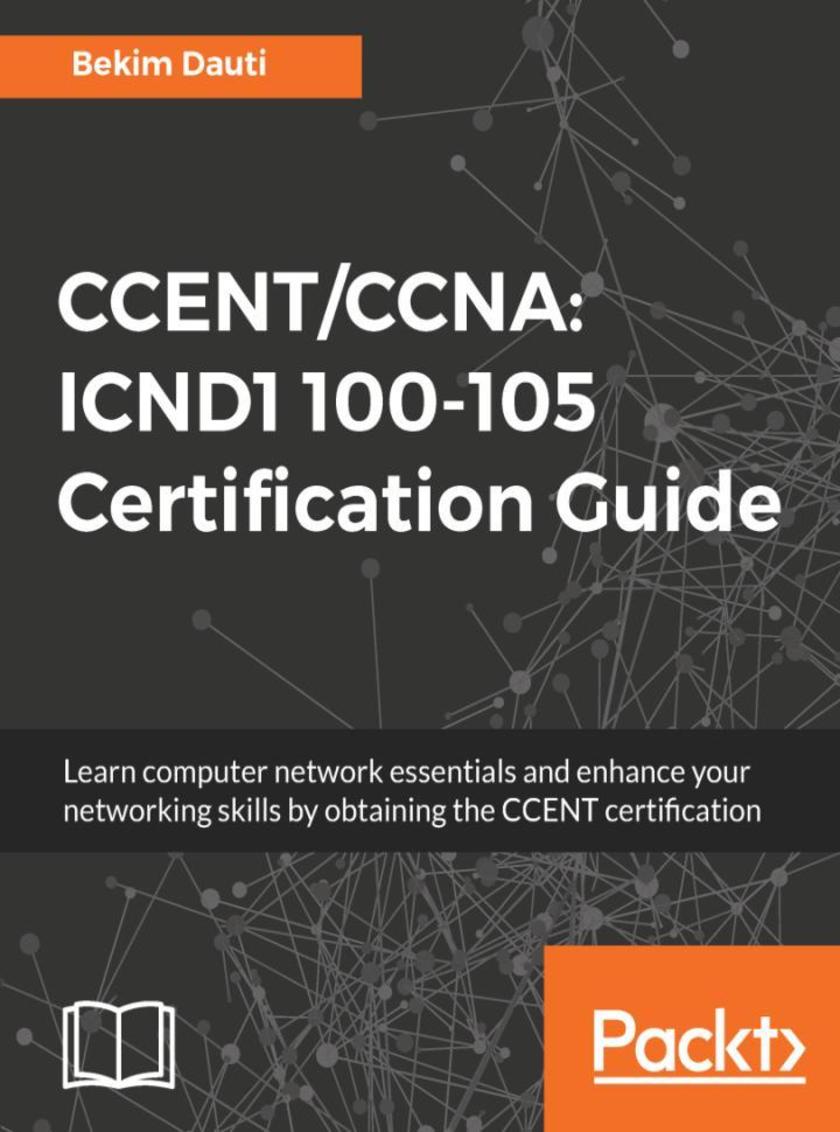
CCENT/CCNA: ICND1 100-105 Certification Guide
¥54.49
Become familiar with ICND1 (100-105) exam objectives, and learn how to get ready for the exam About This Book ? A step by step guide that will build you skills from basic concepts to completely understanding network communication ? Comprehensive coverage to help you implement the knowledge you've gained in real-world scenarios ? Take practice questions and mock tests to check how prepared you are for the CCENT exam Who This Book Is For If you are a Network Administrator, Network Technician, Networking professional, or would simply like to prepare for your CCENT certification, then this book is for you. Some basic understanding of networks and how they work would be helpful. Sufficient information will be provided to those new to this field. What You Will Learn ? Get to grips with the computer network concepts ? Understand computer network components and learn to create a computer network ? Understand switching and learn how to configure a switch ? Understand routing and learn how to configure a router ? Understand network services and the maintenance process ? Learn how to troubleshoot networking issues ? Become familiar with, and learn how to prepare for, the ICND1 100-105 exam In Detail CCENT is the entry-level certification for those looking to venture into the networking world. This guide will help you stay up-to date with your networking skills. This book starts with the basics and will take you through everything essential to pass the certification exam. It extensively covers IPv4 and IPv6 addressing, IP data networks, switching and routing, network security, and much more—all in some detail. This guide will provide real-world examples with a bunch of hands-on labs to give you immense expertise in important networking tasks, with a practical approach. Each chapter consists of practice questions to help you take up a challenge from what you have procured. This book ends with mock tests with several examples to help you confidently pass the certification. This Certification Guide consists of everything you need to know in order to pass the ICND 1 100-105 Exam, thus obtaining a CCENT certification. However, practicing with real switches and routers or a switch or router simulator will help you succeed. Style and approach This book is for everyone! It will help beginners who are taking their first steps into the world of computer networks. At the same time, this book can be used by intermediate and advanced network administrators to recap computer network concepts. It will be a handy certification guide for anyone who is studying and preparing to take the Interconnecting Cisco Networking Devices Part 1 (100-105) exam, thus obtaining CCENT certification, which will be a handy professional asset.
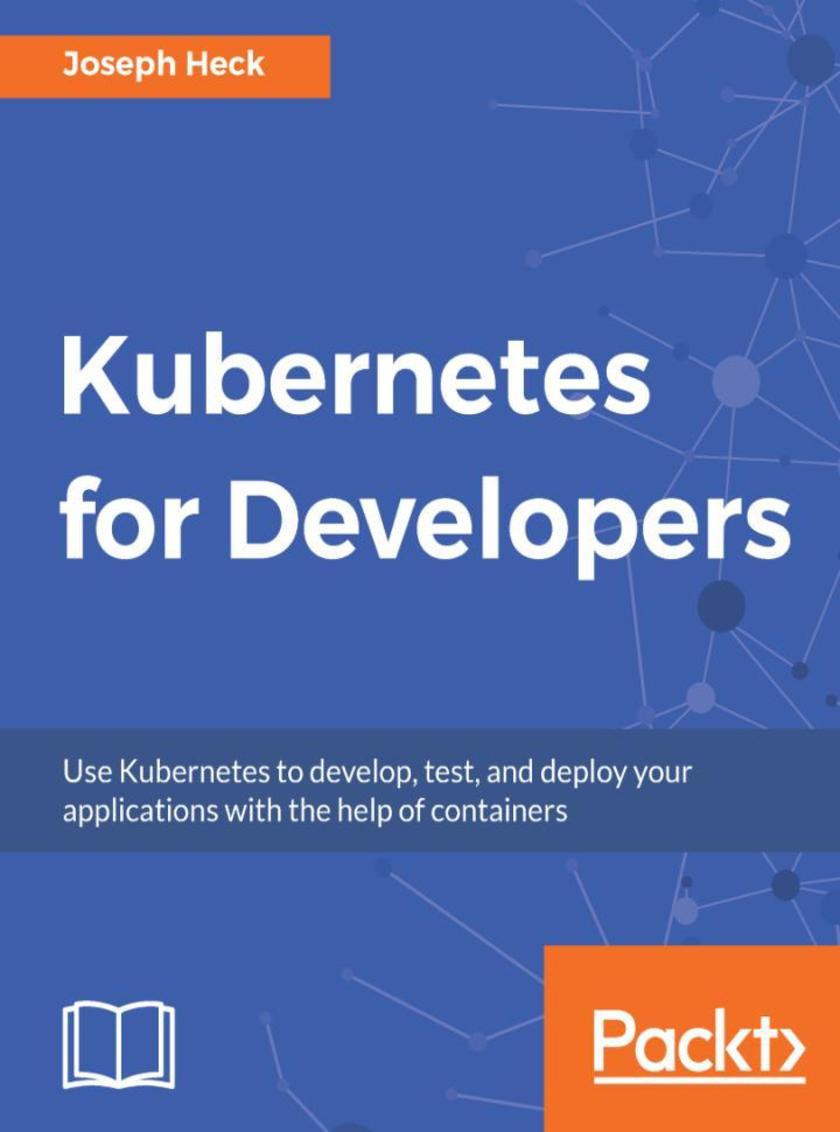
Kubernetes for Developers
¥81.74
A developer's field-guide to designing scalable services using Kubernetes About This Book ? Develop and run your software using containers within a Kubernetes environment ? Get hands-on experience of using Kubernetes with DevOps concepts such as continuous integration, benchmark testing, monitoring, and so on ? Pragmatic example-based approach showing how to use Kubernetes in the development process Who This Book Is For If you are a full-stack or back-end software developers interested, curious, or being asked to test as well as run the code you're creating, you can leverage Kubernetes to make that process simpler and consistent regardless of where you deploy. If you're looking for developer focused examples in NodeJS and Python for how to build, test, deploy, and run your code with Kubernetes, this is perfect for you. What You Will Learn ? Build your software into containers ? Deploy and debug software running in containers within Kubernetes ? Declare and add configuration through Kubernetes ? Define how your application fits together, using internal and external services ? Add feedback to your code to help Kubernetes manage your services ? Monitor and measure your services through integration testing and in production deployments In Detail Kubernetes is documented and typically approached from the perspective of someone running software that has already been built. Kubernetes may also be used to enhance the development process, enabling more consistent testing and analysis of code to help developers verify not only its correctness, but also its efficiency. This book introduces key Kubernetes concepts, coupled with examples of how to deploy and use them with a bit of Node.js and Python example code, so that you can quickly replicate and use that knowledge. You will begin by setting up Kubernetes to help you develop and package your code. We walk you through the setup and installation process before working with Kubernetes in the development environment. We then delve into concepts such as automating your build process, autonomic computing, debugging, and integration testing. This book covers all the concepts required for a developer to work with Kubernetes. By the end of this book, you will be in a position to use Kubernetes in development ecosystems. Style and approach This book will cover examples using NodeJS and Python that walk you through building containers, defining your deployments, deploying, debugging, testing, and generally interacting with your code running on Kubernetes. The examples are focused on common development needs, and include pragmatic advice and the explanations behind that advice.
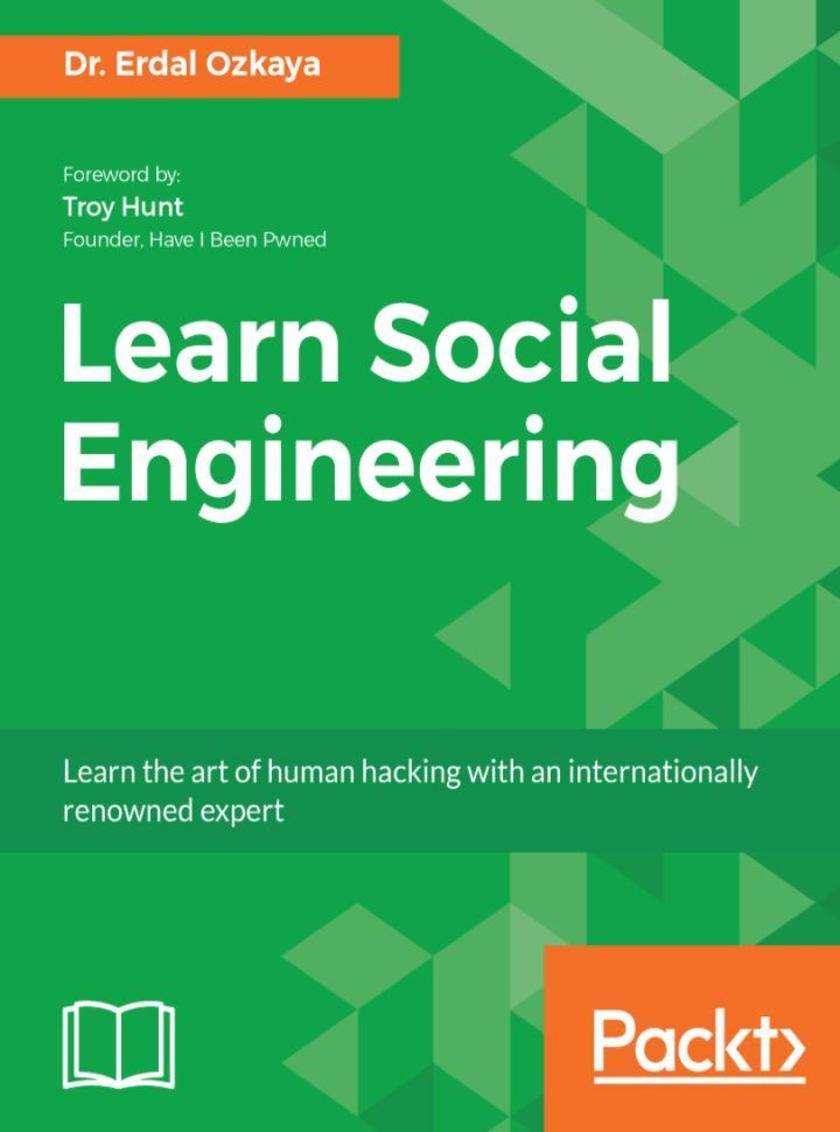
Learn Social Engineering
¥73.02
Improve information security by learning Social Engineering. About This Book ? Learn to implement information security using social engineering ? Get hands-on experience of using different tools such as Kali Linux, the Social Engineering toolkit and so on ? Practical approach towards learning social engineering, for IT security Who This Book Is For This book targets security professionals, security analysts, penetration testers, or any stakeholder working with information security who wants to learn how to use social engineering techniques. Prior knowledge of Kali Linux is an added advantage What You Will Learn ? Learn to implement information security using social engineering ? Learn social engineering for IT security ? Understand the role of social media in social engineering ? Get acquainted with Practical Human hacking skills ? Learn to think like a social engineer ? Learn to beat a social engineer In Detail This book will provide you with a holistic understanding of social engineering. It will help you to avoid and combat social engineering attacks by giving you a detailed insight into how a social engineer operates. Learn Social Engineering starts by giving you a grounding in the different types of social engineering attacks,and the damages they cause. It then sets up the lab environment to use different toolS and then perform social engineering steps such as information gathering. The book covers topics from baiting, phishing, and spear phishing, to pretexting and scareware. By the end of the book, you will be in a position to protect yourself and your systems from social engineering threats and attacks. All in all, the book covers social engineering from A to Z , along with excerpts from many world wide known security experts. Style and approach A step-by-step practical guide that will get you well acquainted with Social Engineering. You’ll be able to get started with it in a matter of minutes with the help of different tools such as the Social Engineering toolkit , Kali Linux and so on.
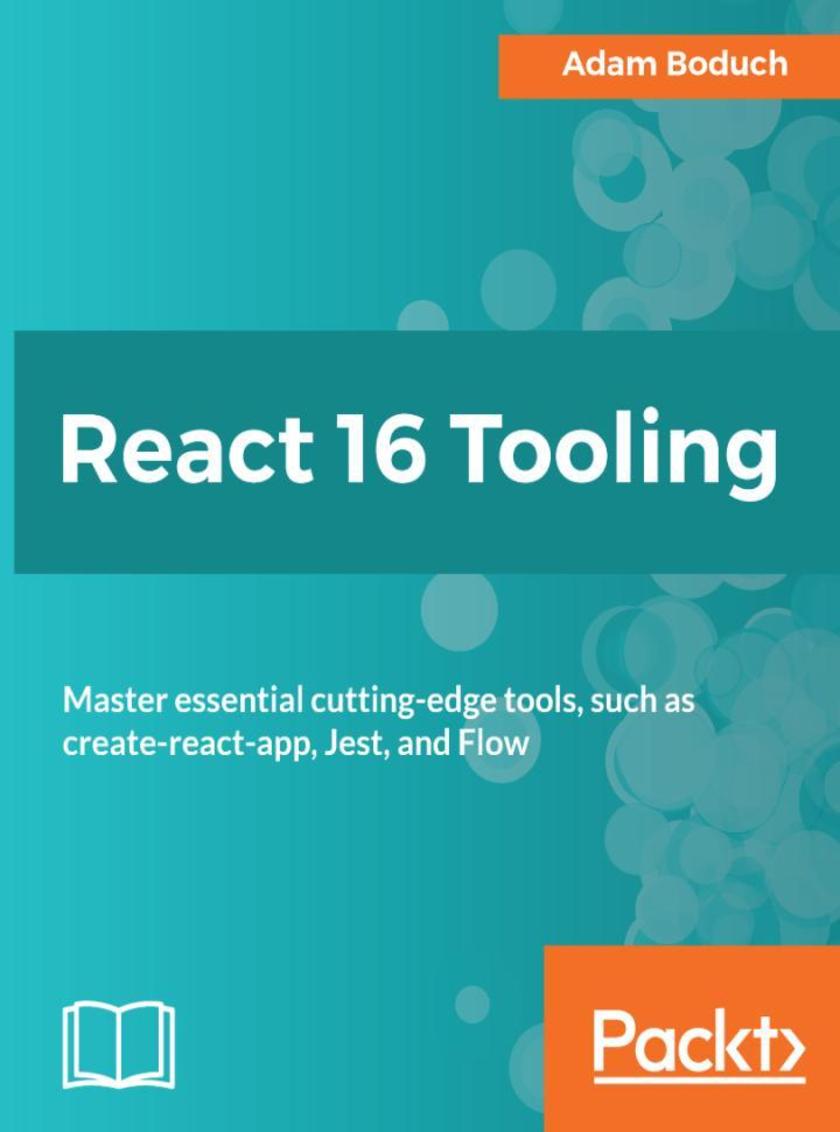
React 16 Tooling
¥81.74
React 16 Tooling covers the most important tools, utilities, and libraries that every React developer needs to know - in detail. About This Book ? Each chapter presents meta-development solutions to help React developers ? The tools used are presented in a practical, solution-oriented approach with no fluff ? The chapters are arranged in a logical order that mirrors a typical React development workflow, but you are free to tweak the approaches discussed to fit your own unique style Who This Book Is For This book is for React developers of any skill level who want to make their lives easier. It helps to have some familiarity with React, but if you are an experienced web developer looking at React, then this book will show you how to build a resilient toolset around you before you begin. What You Will Learn ? Bootstrap a React application using create-react-app ? Isolate React component development using Storybook ? Write effective unit tests for your React components using Jest ? Ensure that your component code is to standard using ESLint ? Use browser extensions and built-in component instrumentation to debug React applications ? Enable type safety in React components with Flowtype ? Deploy React applications inside a Docker container as part of a larger application stack In Detail React 16 Tooling covers the most important tools, utilities, and libraries that every React developer needs to know - in detail. As React has grown, the amazing toolset around it has also grown, adding features and enhancing the development workflow. Each of these essential tools is presented in a practical manner and in a logical order mirroring the development workflow. These tools will make your development life simpler and happier, enabling you to create better and more performant apps. Adam starts with a hand-picked selection of the best tools for the React 16 ecosystem. For starters, there's the create-react-app utility that's officially supported by the React team. Not only does this tool bootstrap your React project for you, it also provides a consistent and stable framework to build upon. The premise is that when you don't have to think about meta development work, more focus goes into the product itself. Other React tools follow this same approach to automating and improving your development life. Jest makes unit testing quicker. Flow makes catching errors easier. Docker containers make deployment in a stack simpler. Storybook makes developing components straightforward. ESLint makes writing standardized code faster. The React DevTools plugin makes debugging a cinch. React 16 Tooling clears away the barriers so you can focus on developing the good parts. In this book, we'll look at each of these powerful tools in detail, showing you how to build the perfect React ecosystem to develop your apps within. Style and approach This book covers React tools that help developers with the most relevant challenges they face today. Each chapter begins by defining the challenge faced by developers and why the tool is required, then shows how to fix the problem using React tooling.
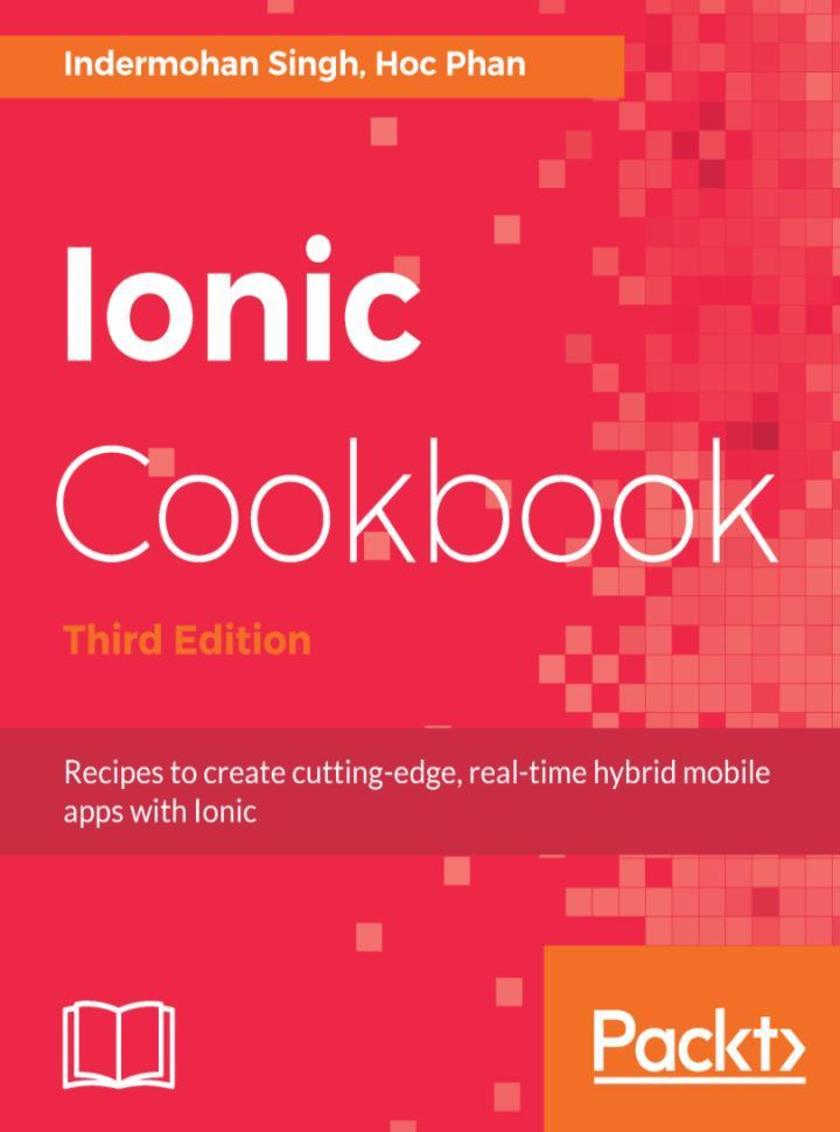
Ionic Cookbook
¥81.74
Solve all your Ionic-related issues through dedicated recipes that will help you get the best out of Ionic. Working with Ionic components to find out the best way to share data between them effectively. About This Book ? Leverage Ionic 3.9 and its exciting new features to create cutting-edge, real-time apps ? Work through simple recipes to address your problems directly and solve them effectively ? Get examples at each step to guide you on your learning curve with Angular Who This Book Is For This book targets JavaScript developers. No previous knowledge of Ionic is necessary, but prior knowledge of web development techniques would be useful. What You Will Learn ? Help readers to jump-start Ionic apps ? Explore essential features of Ionic with examples ? Learn how to use native device functionalities ? Make the best use of the REST API to handle back-end services ? Work with Cordova to support native functionalities on both iOS and Android. ? Master advanced topics in app development such as deep linking and lazy loading In Detail Ionic is the preferred choice for JavaScript developers to develop real-time hybrid applications. This book will get you started with Ionic 3.9 and help you create Angular 5 components that interact with templates. You will work with Ionic components and find out how to share data efficiently between them. You'll discover how to make the best use of the REST API to handle back-end services and then move on to animating your application to make it look pretty. You then learn to add in a local push notification in order to test the app. Then you'll work with Cordova to support native functionalities on both iOS and Android. From there, you'll get to grips with using the default themes for each platform and customizing your own. We then take you through the advanced Ionic features like lazy loading, deep linking, localizing ionic apps etc. Finally, you'll see how best to deploy your app to different platforms. This book will solve all your Ionic-related issues through dedicated recipes that will help you get the best out of Ionic. Style and approach The book's recipe-based approach will help you get the best out of Ionic 3.9
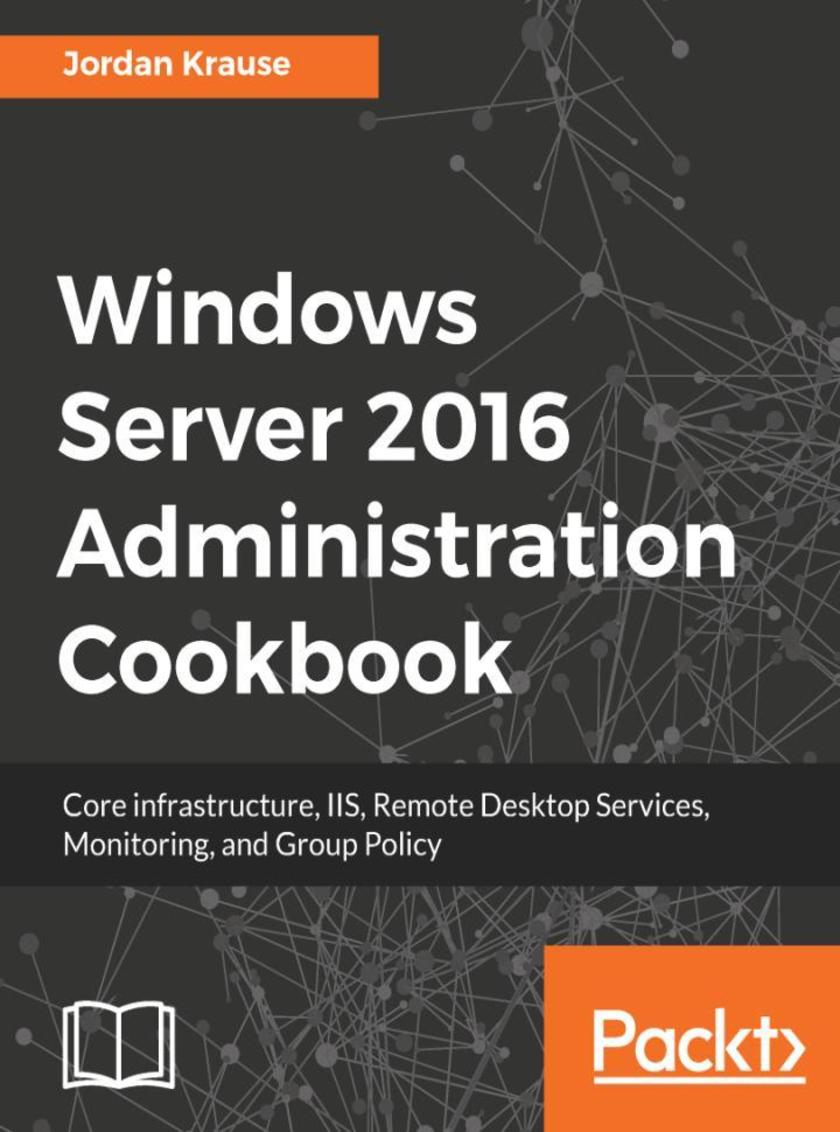
Windows Server 2016 Administration Cookbook
¥54.49
This book contains more than 65 recipes that will equip you with what you need to know to work with Windows 2016 Server. This book will help you learn how to administrate your Windows Server for optimal performance. About This Book ? A focussed guide to help you with the core functionalities of Windows Server 2016 ? Explore tasks that will help you build a datacenter from scratch using Windows Server 2016 ? Step-by-step instructions for common Windows Server administration duties Who This Book Is For This book is for system administrators or IT professionals who want the skills to manage and maintain the core infrastructure of a Windows Server 2016 environment.? Prior experience in Windows Server 2012 R2 environments will be helpful. What You Will Learn ? Become skilled in the navigation of Windows Server 2016, and explore the technologies and options that it provides ? Build the infrastructure required for a successful Windows Server network ? Move away from those open-source web server platforms and start migrating your websites to Server 2016's Internet Information Services today ? Provide a centralized point for users to access applications and data by confguring Remote Desktop Services ? Compose optimal Group Policies In Detail Windows Server 2016 is an operating system designed to run on servers. It supports enterprise-level data storage, communications, management, and applications. This book contains specially selected, detailed help on core, essential administrative tasks of Windows Server 2016. This book starts by helping you to navigate the interface of Windows Server 2016, and quickly shifts gears to implementing roles that are necessarily in any Microsoft-centric datacenter. This book will also help you leverage the web services platform built into Windows Server 2016, available to anyone who runs this latest and greatest Server operating system. Further, you will also learn to compose optimal Group Policies and monitor system performance and IP address management. This book will be a handy quick-reference guide for any Windows Server administrator, providing easy to read, step-by-step instructions for many common administrative tasks that will be part of any Server Administrator’s job description as they administer their Windows Server 2016 powered servers. The material in the book has been selected from the content of Packt's Windows Server 2016 Cookbook by Jordan Krause to provide a specific focus on key Windows Server administration tasks. Style and approach This book contains recipes that have been specially selected to help with the core, essential administrative tasks of Windows Server 2016.
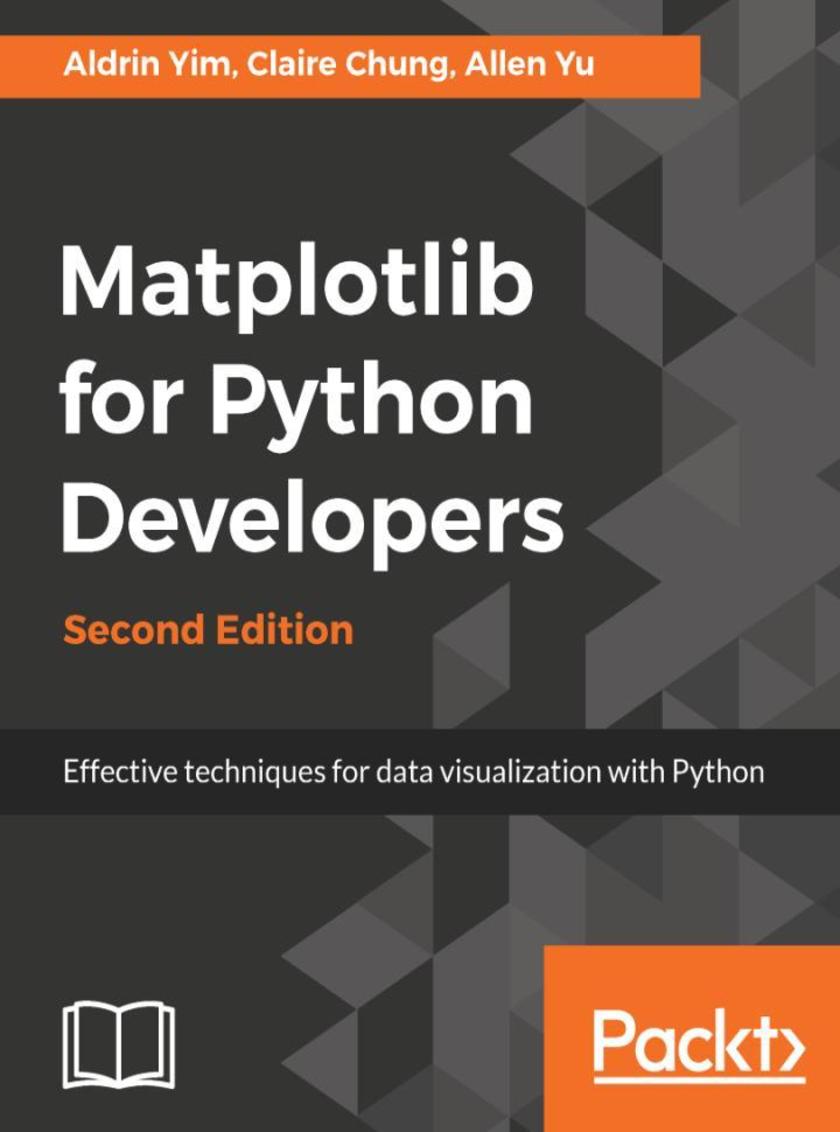
Matplotlib for Python Developers
¥73.02
Leverage the power of Matplotlib to visualize and understand your data more effectively About This Book ? Perform effective data visualization with Matplotlib and get actionable insights from your data ? Design attractive graphs, charts, and 2D plots, and deploy them to the web ? Get the most out of Matplotlib in this practical guide with updated code and examples Who This Book Is For This book is essentially for anyone who wants to create intuitive data visualizations using the Matplotlib library. If you’re a data scientist or analyst and wish to create attractive visualizations using Python, you’ll find this book useful. Some knowledge of Python programming is all you need to get started. What You Will Learn ? Create 2D and 3D static plots such as bar charts, heat maps, and scatter plots ? Get acquainted with GTK+3, Qt5, and wxWidgets to understand the UI backend of Matplotlib ? Develop advanced static plots with third-party packages such as Pandas, GeoPandas, and Seaborn ? Create interactive plots with real-time updates ? Develop web-based, Matplotlib-powered graph visualizations with third-party packages such as Django ? Write data visualization code that is readily expandable on the cloud platform In Detail Python is a general-purpose programming language increasingly being used for data analysis and visualization. Matplotlib is a popular data visualization package in Python used to design effective plots and graphs. This is a practical, hands-on resource to help you visualize data with Python using the Matplotlib library. Matplotlib for Python Developers, Second Edition shows you how to create attractive graphs, charts, and plots using Matplotlib. You will also get a quick introduction to third-party packages, Seaborn, Pandas, Basemap, and Geopandas, and learn how to use them with Matplotlib. After that, you’ll embed and customize your plots in third-party tools such as GTK+3, Qt 5, and wxWidgets. You’ll also be able to tweak the look and feel of your visualization with the help of practical examples provided in this book. Further on, you’ll explore Matplotlib 2.1.x on the web, from a cloud-based platform using third-party packages such as Django. Finally, you will integrate interactive, real-time visualization techniques into your current workflow with the help of practical real-world examples. By the end of this book, you’ll be thoroughly comfortable with using the popular Python data visualization library Matplotlib 2.1.x and leveraging its power to build attractive, insightful, and powerful visualizations. Style and approach Step by step approach to learning the best of Matplotlib 2.1.x
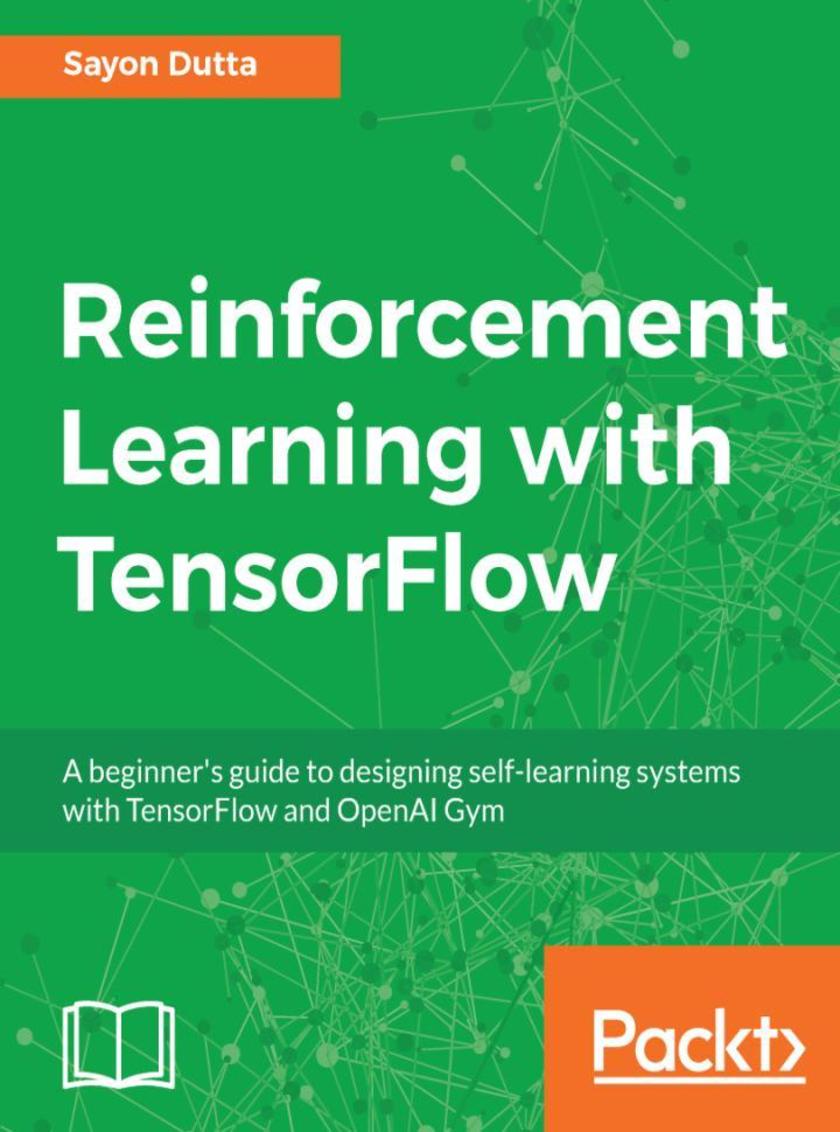
Reinforcement Learning with TensorFlow
¥90.46
Leverage the power of the Reinforcement Learning techniques to develop self-learning systems using Tensorflow About This Book ? Learn reinforcement learning concepts and their implementation using TensorFlow ? Discover different problem-solving methods for Reinforcement Learning ? Apply reinforcement learning for autonomous driving cars, robobrokers, and more Who This Book Is For If you want to get started with reinforcement learning using TensorFlow in the most practical way, this book will be a useful resource. The book assumes prior knowledge of machine learning and neural network programming concepts, as well as some understanding of the TensorFlow framework. No previous experience with Reinforcement Learning is required. What You Will Learn ? Implement state-of-the-art Reinforcement Learning algorithms from the basics ? Discover various techniques of Reinforcement Learning such as MDP, Q Learning and more ? Learn the applications of Reinforcement Learning in advertisement, image processing, and NLP ? Teach a Reinforcement Learning model to play a game using TensorFlow and the OpenAI gym ? Understand how Reinforcement Learning Applications are used in robotics In Detail Reinforcement Learning (RL), allows you to develop smart, quick and self-learning systems in your business surroundings. It is an effective method to train your learning agents and solve a variety of problems in Artificial Intelligence—from games, self-driving cars and robots to enterprise applications that range from datacenter energy saving (cooling data centers) to smart warehousing solutions. The book covers the major advancements and successes achieved in deep reinforcement learning by synergizing deep neural network architectures with reinforcement learning. The book also introduces readers to the concept of Reinforcement Learning, its advantages and why it’s gaining so much popularity. The book also discusses on MDPs, Monte Carlo tree searches, dynamic programming such as policy and value iteration, temporal difference learning such as Q-learning and SARSA. You will use TensorFlow and OpenAI Gym to build simple neural network models that learn from their own actions. You will also see how reinforcement learning algorithms play a role in games, image processing and NLP. By the end of this book, you will have a firm understanding of what reinforcement learning is and how to put your knowledge to practical use by leveraging the power of TensorFlow and OpenAI Gym. Style and approach An Easy-to-follow, step-by-step guide to help you get to grips with real-world applications of Reinforcement Learning with TensorFlow.
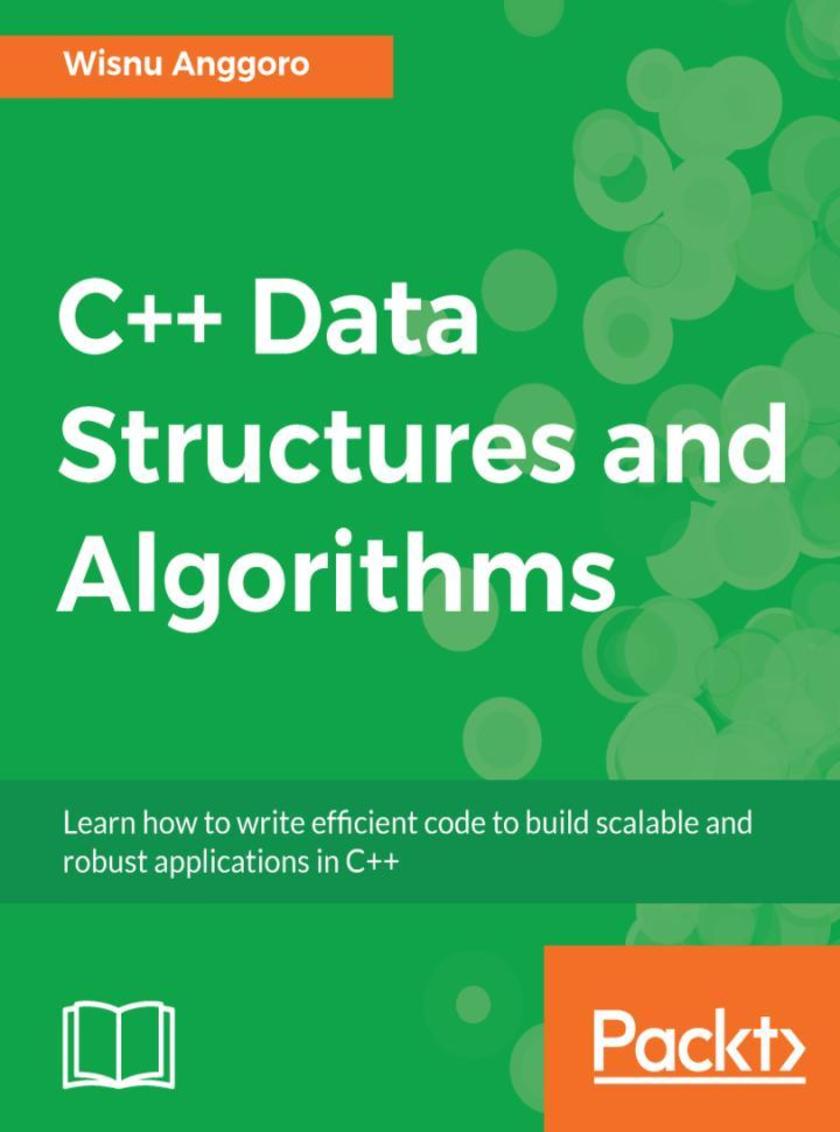
C++ Data Structures and Algorithms
¥81.74
Learn how to build efficient, secure and robust code in C++ by using data structures and algorithms - the building blocks of C++ About This Book ? Use data structures such as arrays, stacks, trees, lists, and graphs with real-world examples ? Learn the functional and reactive implementations of the traditional data structures ? Explore illustrations to present data structures and algorithms, as well as their analysis, in a clear, visual manner Who This Book Is For This book is for developers who would like to learn the Data Structures and Algorithms in C++. Basic C++ programming knowledge is expected. What You Will Learn ? Know how to use arrays and lists to get better results in complex scenarios ? Build enhanced applications by using hashtables, dictionaries, and sets ? Implement searching algorithms such as linear search, binary search, jump search, exponential search, and more ? Have a positive impact on the efficiency of applications with tree traversal ? Explore the design used in sorting algorithms like Heap sort, Quick sort, Merge sort and Radix sort ? Implement various common algorithms in string data types ? Find out how to design an algorithm for a specific task using the common algorithm paradigms In Detail C++ is a general-purpose programming language which has evolved over the years and is used to develop software for many different sectors. This book will be your companion as it takes you through implementing classic data structures and algorithms to help you get up and running as a confident C++ programmer. We begin with an introduction to C++ data structures and algorithms while also covering essential language constructs. Next, we will see how to store data using linked lists, arrays, stacks, and queues. Then, we will learn how to implement different sorting algorithms, such as quick sort and heap sort. Along with these, we will dive into searching algorithms such as linear search, binary search and more. Our next mission will be to attain high performance by implementing algorithms to string datatypes and implementing hash structures in algorithm design. We'll also analyze Brute Force algorithms, Greedy algorithms, and more. By the end of the book, you'll know how to build components that are easy to understand, debug, and use in different applications. Style and approach Readers will be taken through an indispensable list of data structures and algorithms so they can confidently begin coding in C++.




 购物车
购物车 个人中心
个人中心



